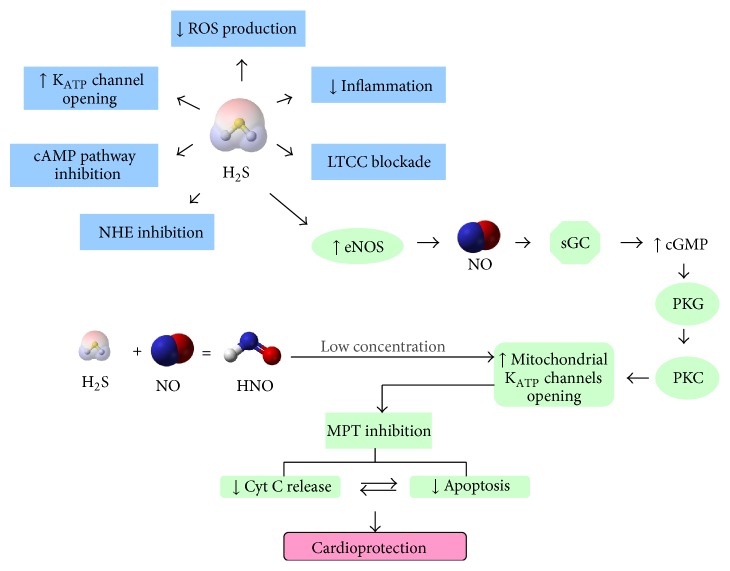Figure 4.
Cardioprotective effects of NO, H2S, and HNO. There are multiple underlying mechanisms for cardioprotective effect of H2S. It has been demonstrated to induce KATP channel opening, abolish inflammation and oxidative stress by inhibiting ROS production, block LTCC and intracellular cAMP signaling pathway, and inhibit Na+/H+ exchanger activity. Furthermore, NO also plays an important role in the cardioprotective effect of H2S. Endogenous NO generated from eNOS in endothelial cells initiates the sGC-cGMP-PKG cascade to increase openings of subcellular (mitochondrial) KATP channels. The resultant inhibition of mitochondrial permeability transition (MPT) is responsible for decreased cytochrome C release and apoptosis in cardiomyocytes. HNO, depending on the concentration, can be either cardioprotective or cardiotoxic. At low concentration, just like NO, HNO also stimulates KATP channels opening in mitochondria.

